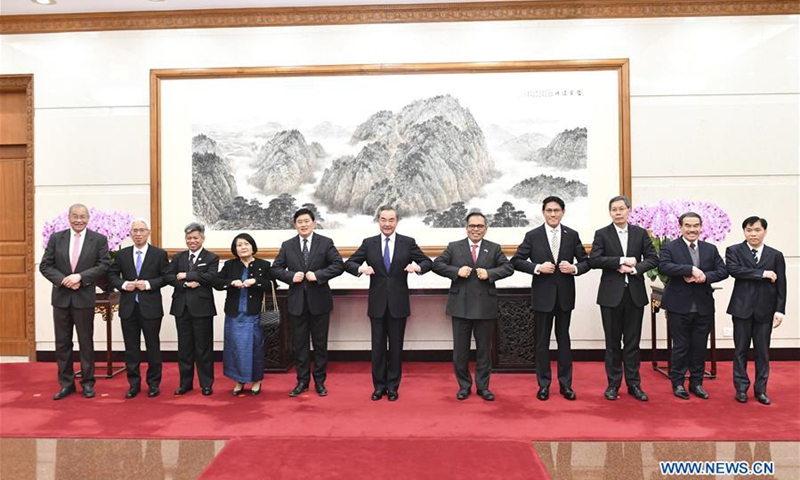China aims for more FTAs in further foreign trade development
Source: Global Times Published: 2020/11/10 4:43:38

Chinese State Councilor and Foreign Minister Wang Yi meets with diplomatic envoys of the Association of Southeast Asian Nations (ASEAN) countries in Beijing, capital of China, Nov. 8, 2020. (Xinhua/Yin Bogu)
To adapt to the changing international and domestic trends, China will pursue international cooperation and competition as well as innovative development in foreign trade, one of the driving forces of the nation’s economic growth.In a guideline issued on Monday by the State Council, the country’s cabinet, China aims to optimize the international trade environment. It will resolutely safeguard the multilateral trading system with the WTO at its core, oppose unilateralism and protectionism, and support necessary reforms of the WTO.
China will promote the signing of the Regional Comprehensive Economic Partnership (RCEP) as soon as possible, and speed up negotiations for the China-Japan-Korea Free Trade Agreement (FTA) and China-Gulf Cooperation Council (GCC) FTA. It will also actively negotiate and sign more high-standard FTAs and regional trade agreements, according to the guideline.
Leaders of 15 Asia-Pacific countries plan to strike a regional free trade agreement on Sunday without India, creating an economic bloc representing around a third of the world’s gross domestic product and population, the Japan Times reported Monday, citing sources.
The 37th summit of the Association of Southeast Asian Nations (ASEAN) and related meetings will be held via video link from Thursday to Sunday, including the ASEAN summit, the ASEAN-China summit, the RCEP summit and others.
Domestically, the nation aims to build a series of industry-leading enterprises that could shine in the global market.
In the fields of communications, electric power, construction machinery and rail transit, a group of leading enterprises with strong innovation capabilities and international competitiveness will be cultivated. They will be provided with guidance to innovate external cooperation methods and optimize resources, brands and marketing channels, read the guideline.
In addition, China will advance the optimizing of the structure of exports and imports. Traditional labor-intensive export products like clothes, bags and shoes should gradually shift toward high-end and refined development. Technology should be given full play to expand imports of advanced technologies, important equipment and key components.